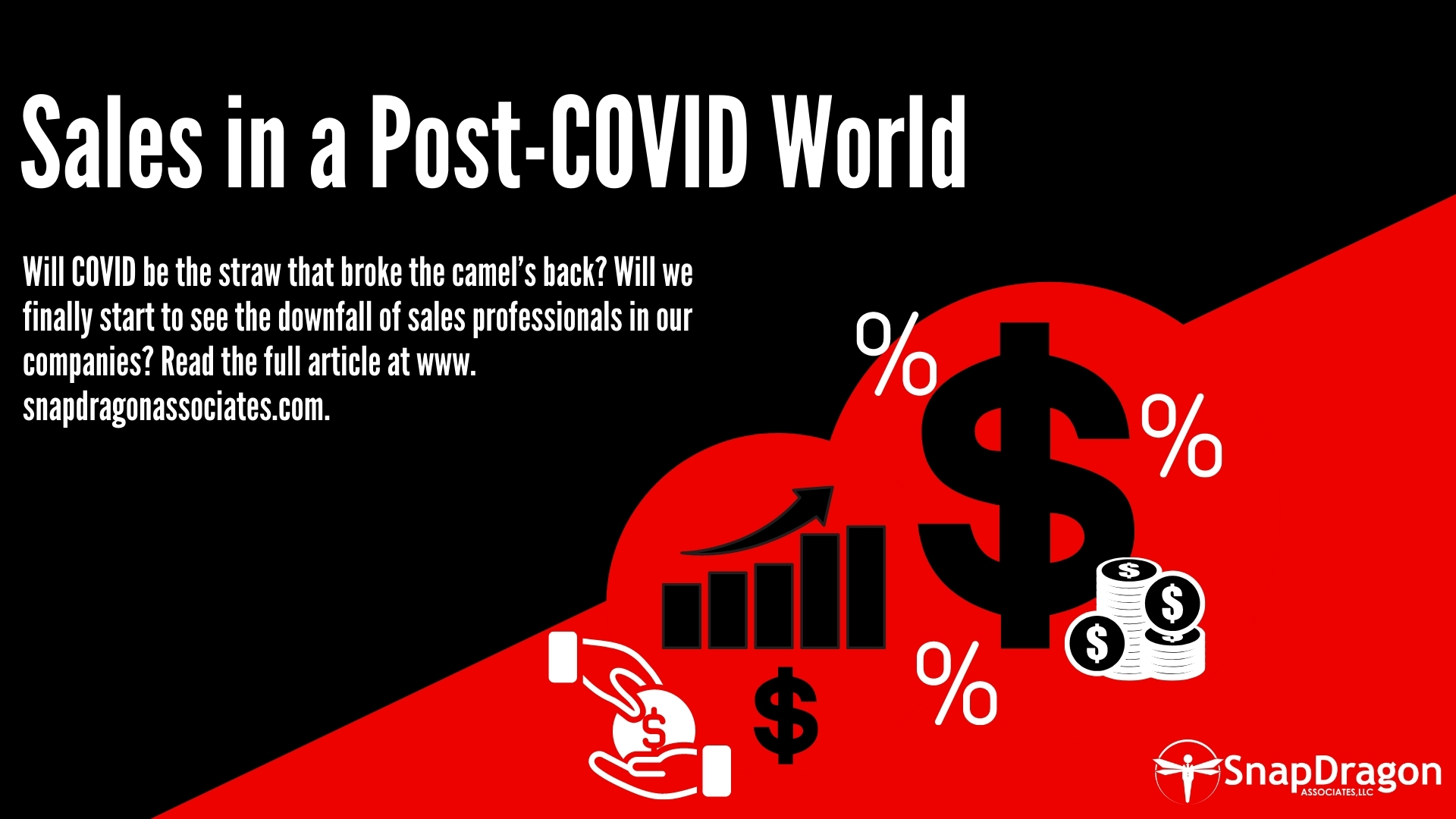Sales in a Post-COVID World
Posted on May 28, 2021


Sales in a Post-COVID World
A little more than a year ago, everything was business as usual. Now, after the most significant period of restructuring in the last decade, many companies are revisiting the structure of their sales team.
Do we need more outside salespeople . . . more inside salespeople? Should we restructure to a hybrid model? Those are the questions haunting executives as we enter the post-COVID era.
Let’s take a realistic look at the challenges facing these executives and how they should restructure their sales teams to regain and increase business. What affect has COVID taken on the way their sales teams do business? What challenges will their outside sales team face as internet and telephone sales become more dominant? How are their clients going to react to this post-COVID world? These questions are floating through many executives’ minds these days, so let’s take a look at COVID’s effect on sales teams and how businesses should react as they head into a post-COVID era.
COVID’s Effect on Sales Teams
When lockdowns started going into effect, companies had to rapidly restructure their sales teams to shift away from face-to-face sales and toward digital interactions.
In fact, McKinsey reports that about 90% of B2B sellers have been working via videoconference or telephone during the pandemic. In the same article, McKinsey reports that surveyed businesses indicated that digital and phone sales were twice as important as in-person sales during the pandemic.
Some companies have opted to move their outside salespeople to inside sales. However, Justin Roff-Marsh, the founder of Ballistix, says that’s a bad idea; even saying that it would be “crazy in the extreme.” He argues that COVID has exposed sales for what it has become in the last decade or so . . . “highly paid customer service reps,” with the focus moving from sales to looking after the company’s revenue.
COVID exposed a severe problem in traditional sales teams which has created an environment where salespeople can’t focus on the part of their job that they do best . . . making sales.
So how do we fix this problem as we advance?
Sales in a Post-COVID World
For years people have been predicting the demise of B2B sales. We’ve repeatedly heard how online resources would replace salespeople, yet this prediction has never come true.
Will COVID be the straw that broke the camel’s back? Will we finally start to see the downfall of sales professionals in our companies?
It isn’t likely. Even though COVID has put a strain on sales systems in most companies and has exposed problems in the way sales teams work, businesses continue to make money through their salespeople.
In a recent McKinsey report, more than half of businesses indicated that using videoconferencing and other digital selling methods are just as effective, or more effective, than in-person sales. Since digital sales methods are more productive than traditional outside sales, most businesses will continue the focus on digital sales well after the pandemic is over.
However, many businesses reported that these digital sales techniques did not produce the same results as traditional sales techniques.
The disparity between businesses that enjoyed increased sales and those whose sales decreased upon going digital is likely due to a combination of factors. According to Harvard Business Review, some products lend themselves to digital sales (like pharmaceuticals) while others require a more traditional approach (like complicated technology).
The solution . . . instead of getting rid of outside sales teams, companies should be ready to merge outside and inside sales into hybrid units. Businesses are starting to realize that in order to thrive and grow after COVID means investing in developing skills on their teams. Most importantly is how to handle a combination of inside and outside sales.
As the use of digital sales techniques becomes more commonplace during and after the pandemic, outside sales practices will most likely never rebound to their full, pre-COVID importance. However, they will still play a significant role in the hybrid sales teams of a post-COVID world.
How Can Businesses Work Toward Hybrid Teams?
The most important investment that businesses can make toward hybrid salespeople is by training their sales teams in both digital interactions and traditional sales meetings. That investment will ensure their sales teams function at a high level of success.
Second, businesses should work toward refocusing their sales teams on sales. Justin Roff-Marsh commented that salespeople had become highly-paid customer service reps, spending less time making the company money.
Although servicing customers and managing company revenue is important, salespeople’s focus should be exclusively on sales. A hybrid salesperson will be able to spend his/her day focused entirely on making sales, whether that interaction is digital or traditional.
Third, businesses should assess the efficiency of their digital sales strategies during COVID and whether their product or service lends itself to digital sales. If the product doesn’t require extensive outside sales, businesses should lean toward developing their digital strategies. However, if their product does not sell as well through digital techniques, the business should lean more heavily toward developing its traditional outside sales strategies.
Conclusion
It is undeniable that sales are in transition. Those companies that embrace the changes taking place in the new development strategies and trends in sales and honestly reassess their sales teams to ensure that they are operating at peak efficiency will exemplify the new sales model for the future.





